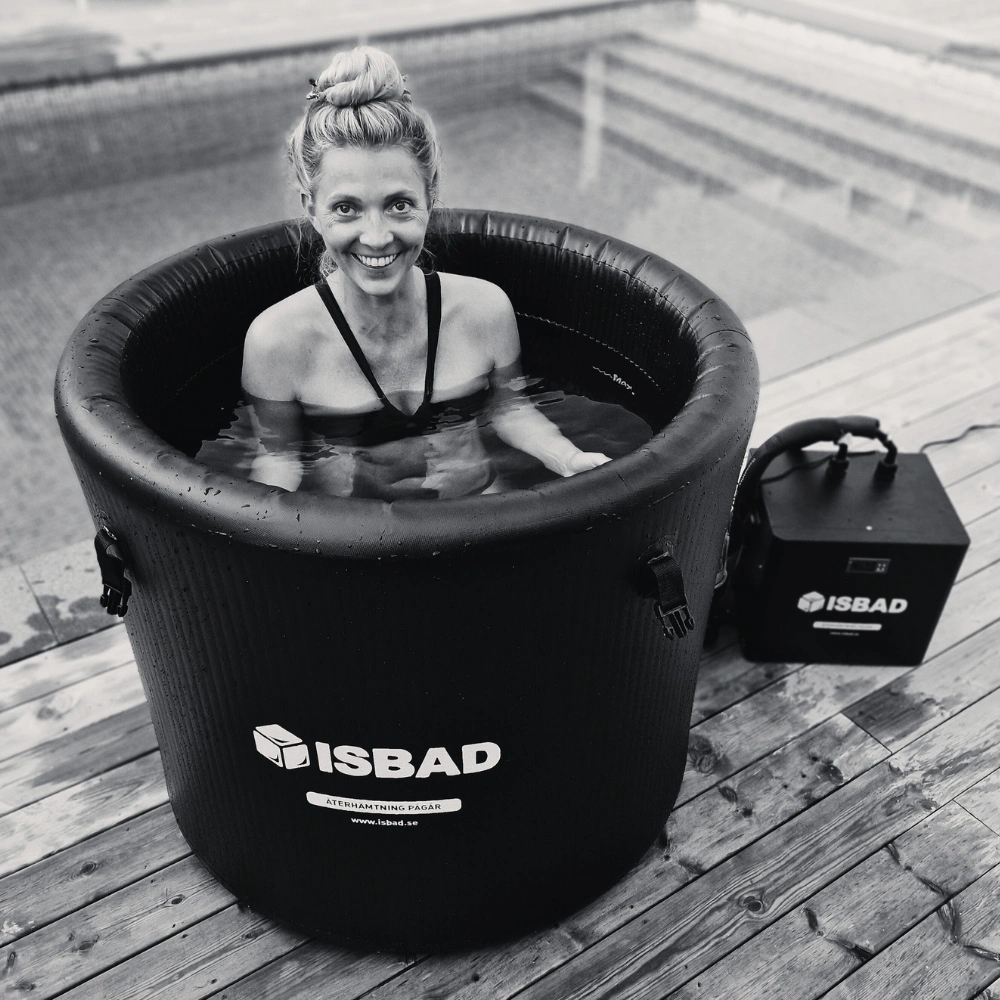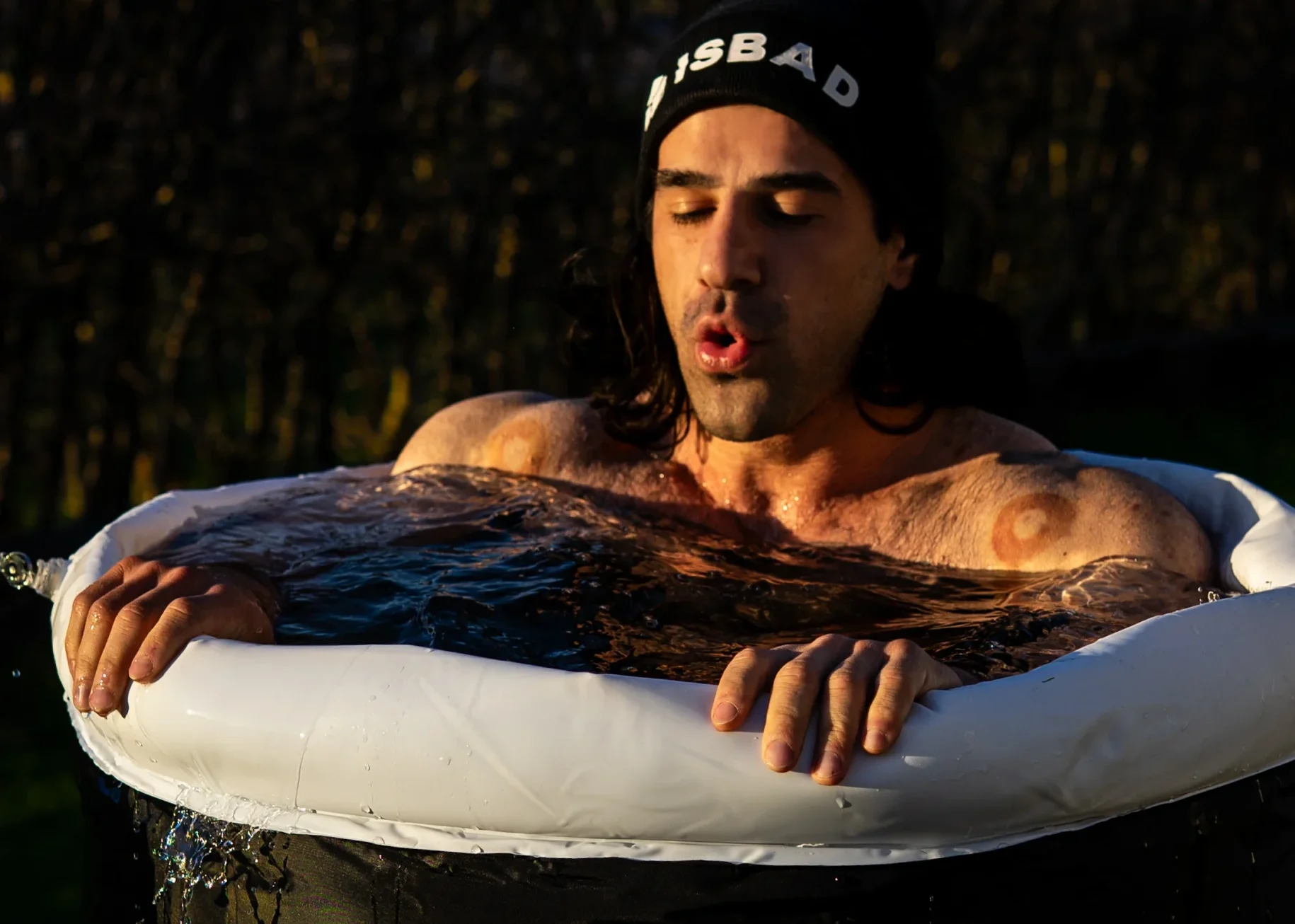Ice bath + steam sauna – alternate between cold and heat for less stiffness and faster recovery.
Hot & cold therapy is an easy way to reduce stiffness, cool down faster, and keep up your training week after week. With an ice bath and steam sauna at home, you can control the temperature precisely and do your routine when it suits you – without having to go to a spa or swimming pool. Here is a straightforward overview of what works, when to choose cold or heat, and how to set up a program that you will actually stick to.
What is hot and cold therapy?
The concept involves using cold (ice bath/cold bath) and hot (sauna/steam room) to affect the body. Cold reduces swelling and calms the nervous system. Heat increases circulation, softens muscles, and helps you relax. You can use them separately or alternate between them—the latter is called contrast therapy.
When is cold (ice bath) the right choice?
- After intense cardio workouts/intervals. Helps lower your heart rate, reduces perceived fatigue, and makes your legs feel fresher faster.
- When you want to relax mentally. The cold forces controlled breathing; many experience a distinct “reset.”
- For numb legs and a feeling of swelling. Especially after matches or long training sessions.
Quick start: 10–15 °C for 2–3 minutes, 2–4 times a week. As tolerance increases, you can move towards 3–5 °C for 2–4 minutes. Keep your head above the surface and get out when your breathing feels controlled.
When is heat (steam bath) the right choice?
- Before mobility or easier passports. Heat makes tissues more pliable.
- On rest days. Helps recovery without strain.
- For stress management and sleep. Warmth in the evening can make it easier to relax.
Quick start: 45–55 °C for 10–15 minutes in a steam sauna (or 70–80 °C in a dry sauna). Drink water before/after.
Contrast therapy – combining heat and cold
Switching between hot and cold creates a pumping effect in the vessels and is perceived by many as effective against stiffness.
Simple method (home version):
Hot 10 min → Cold 2–3 min → Heating 10 min → Cold 2–3 minFinish with cold if you want to feel alert; finish with warm if you want to sleep.
Minutes to copy
Beginners (weeks 1–2)
- Ice bath: 12–15 °C × 2 min, 2–3 times/week
- Steam bath: 10–15 min, 1–3 times/week
- Goal: Find your rhythm, focus on calm breathing (4–6 seconds in/out)
Continuation (weeks 3–6)
- Ice bath: 6–10 °C × 2–3 min, 3–4 times/week
- Contrast: 10 min heat → 3 min cold × 2 rounds, 1–2 times/week
- Goal: less stiffness, faster recovery after workouts
After different types of training
- Fitness/intervals: go out into the cold immediately after showering.
- Heavy strength: It is fine to take an ice bath immediately if the goal is recovery and feeling refreshed. If you are aiming for maximum hypertrophy, take the cold bath later the same day or on a rest day.
- Long working days/very sedentary: Heat first to soften, finish with a brief cooling to focus.
Equipment at home – make it easy
The goal is to reduce friction. If the ice bath is always ready and the heating starts quickly, the routine becomes second nature.
- Ice bath at home. An insulated barrel works outdoors all year round. With chiller kan du ställa 3–4 °C Exactly, even in the summer. It takes the guesswork out of it and allows you to keep the same protocol every week.
- Steam bath. Steam provides pleasant warmth that envelops you and makes it easy to relax; in addition, the heating time is short and energy consumption is often lower than in a traditional sauna.
Want to upgrade: Arctic Noir is an exclusive solution that can cool so far that ice crystals. formed in water – interesting for colder protocols and environments where precision is required.
Safety and good habits
- Avoid cold or heat therapy in the following cases uncontrolled high blood pressure, heart problems, pregnancy, or if you have received other medical advice – check with your healthcare provider if you are unsure.
- Get up if you feel dizzy, nauseous, or lose feeling in your hands/feet.
- Drink water and replenish salt/minerals as needed, especially after steaming.
- Start conservatively. The feeling the day after should be better, no worse.
30-day challenge – make it measurable
If you want to see clear results, try a simple challenge for a month and keep a diary:
- 3 ice baths per week (2–4 min, 3–8 °C).
- 2 steam sessions per week (10–15 min).
- 1 contrast session per week.
- Write down: sleep (1–10), body stiffness, feeling of recovery, and training quality.
Most people see patterns after just two weeks: less stiffness, more stable moods, better sleep quality.
Frequently asked questions (FAQ)
How cold does the water need to be?
The effect is already noticeable at 10–15 °CFor more pressure in the stimulation: 3–5 °C for a shorter period of time. The consequences are extreme – better to do “a little but often.”
How long should I sit?
2–4 minutes is sufficient for most people. Maintain a level where your breathing is under control.
Is it better to finish warm or cold?
It depends on the purpose. Close cold to feel alert. Exit hot if you want to sleep.
Can I take an ice bath after strength training?
Yes. If the focus is on quick recovery, go straight ahead. If the priority is maximum muscle growth, take the cold bath later the same day or on a rest day.
How do I get into a routine?
Prepare the night before, set fixed times, write down what you do and how you feel. Being able to set the temperature precisely (chiller) and start heating quickly (steam bath) reduces friction.
Executive summary
Hot & cold therapy is not complicated: cold for recovery and swelling, heat for mobility and relaxation. Combine them when you want an extra boost. Start simple, control the temperature, keep a diary for 30 days, and adjust according to how your body responds. Once you have a smooth setup at home, the routine will stick—and you'll get the results where it counts, in your everyday life. Challenge yourself with the help of our web app isbad.comIt is used directly on the web without having to install anything on your phone.










